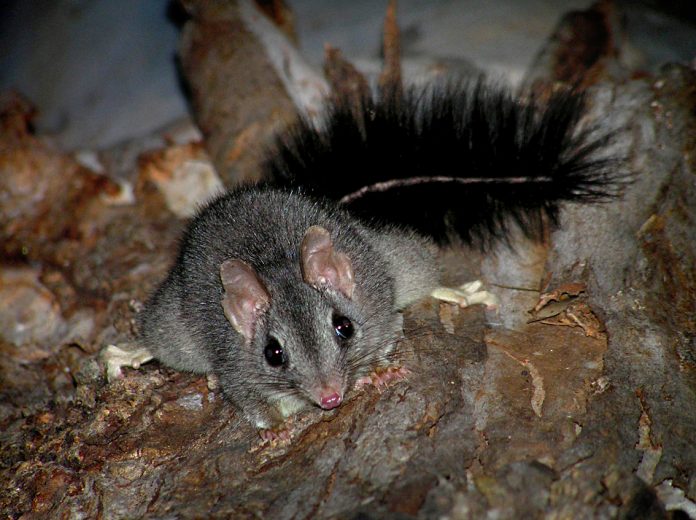
Macedon Ranges faces a critical challenge in tackling the severe and ongoing decline of local ecosystems.
Detrimental human and natural impacts on the environment including endangered flora and fauna have been revealed in Macedon Ranges Council’s submission to the parliamentary inquiry into ecosystem decline.
Potential effects include further species extinctions, impacts on; health and wellbeing of residents, tourism, and the shire’s agricultural industry, which is worth nearly $200 million per annum.
“Macedon Ranges has experienced significant species decline as the result of the fragmentation of habitat associated with land clearance and past logging of native forests,” the submission states.
“This decline will continue as land is further fragmented by subdivision and development and remnant patches of native vegetation are degraded by threatening processes such as domestic uses, lack of weed and pest animal management, inappropriate fuel reduction works, and overgrazing.”
The submission acknowledges several other factors to ecosystem decline including climate change.
The council is calling for increased efforts to improve ecosystem health and has highlighted the need for well-resourced state-led programs to enable coordinated rehabilitation.
The submission seeks expansion and appropriate funding of the public reserve system, increased support for conservation on private land, legislative change to pest management and additional funding for traditional owner groups.
The council states restoration programs must be long-term, landscape scale and informed by on-ground knowledge.
Macedon Ranges was declared the first ‘distinctive area’ afforded state-level protection for its unique environment in 2018 but what is present in the shire today “is only a fraction of what once existed”, according to the submission.
Numerous native animals are now considered locally extinct including the eastern quoll, leadbeater’s possum, and greater glider, which were once wide-spread in the region.
The shire is still home to many endangered or critically endangered species such as the powerful owl and brush-tailed phascogale.
Mammals below 5kg have been identified as the highest at risk of extinction from habitat loss as they rely on tree hollows that take decades to form and are diminishing.
Fauna once thought common in the area have also seen decline in numbers including platypus, wombats and koalas. Records of koalas across the shire have dropped by almost two thirds between the 1960s and 2010s.
Flora species in decline include the black gum (eucalyptus aggregata), hairy leaf triggerplant (stylidium armeria subsp pilosifolium), wombat bush pea (pultenaea reflexifolia) and swamp bush pea (pultenaea weindorferi).
The council’s submission will be considered as part of the parliamentary inquiry into ecosystem decline.
Fauna under threat or gone
Locally extinct
Numerous native animals are now considered locally extinct from the Macedon Ranges including:
* Eastern quoll (last record in the late 1800s)
* Lyre bird (last recorded in the 1800s)
* Southern brown bandicoot (last record in 1968)
* Long-nosed bandicoot (last record in the 1990s)
* Leadbeater’s possum (last record in 1995)
* Greater glider (while nearby in the Wombat State Forest, Greater Glider were last officially recorded on Mount Macedon in 1987)
Local fauna in decline
Many fauna species found in the Macedon Ranges are now listed as threatened or endangered, including: powerful owl, brush-tailed phascogale, brown toadlet, and the Yarra pygmy perch.
Iconic species which were once considered relatively common are seeing local decline including platypus, wombats and koalas. According to Birdlife Australia, the chance of seeing a kookaburra has halved since 1999.
*Macedon Ranges Shire Council submission to the Inquiry into Ecosystem Decline in Victoria, 2020.
Flora at risk
Nearly 80% of ecosystems in the Macedon Ranges are under threat.
Of the 33 Ecological Vegetation Classes known in the shire:
* 13 are listed as ‘endangered’ in Victoria (below 10% of pre-settlement coverage)
* 9 are vulnerable (10-30% of pre-settlement coverage)
* 4 are depleted (30-50% of pre-settlement coverage)
* 6 of least concern (50% of pre-settlement coverage)
Local flora species in decline
Four flora species listed under the Flora and Fauna Guarantee Act have more than 20% of their Victorian range located in the shire; the black gum (Eucalyptus aggregata), hairy leaf triggerplant (Stylidium armeria subsp pilosifolium), wombat bush-pea (Pultenaea reflexifolia) and swamp bush pea (Pultenaea weindorferi).
Other plants of concern include the matted flax-lily (Dianella amoena), silver banksia (Banksia marginata), snow gum (Eucalyptus pauciflora) and yarra gum (Eucalyptus yarraensis).
*Macedon Ranges Shire Council submission to the Inquiry into Ecosystem Decline in Victoria, 2020.







